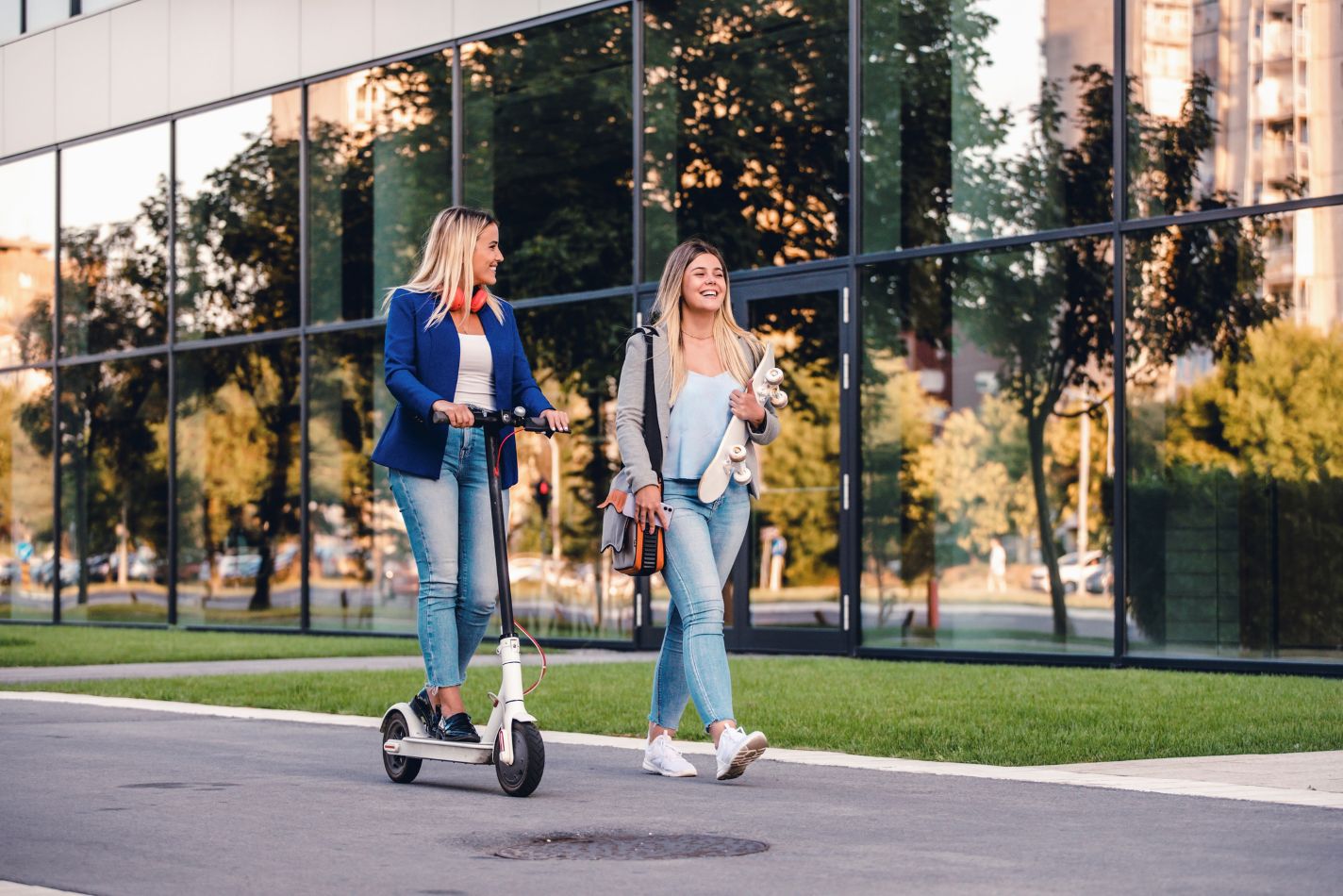Improving urban mobility the smart way? Yes, with smart mobility
Population growth, pollution, traffic congestion, and the demand for more efficient services are pushing cities to rethink the way people move around. In this context, smart mobility emerges as a new approach that combines technology, sustainability, and accessibility, making mobility smarter and more effective.

What is Smart Mobility
Urban mobility today is one of the areas most influenced by technological innovation and the need for greater sustainability.
The term smart mobility refers to a set of solutions, services, and technologies that improve the way people and goods move within an urban or metropolitan area. Unlike traditional mobility, which mainly revolves around private cars, smart mobility focuses on sharing.
What distinguishes it is the convergence of digital tools, alternative means of transport, and integrated management models—an approach that reduces environmental impact and optimizes urban resources, making cities more livable and connected.
Technologies Enabling Smart Mobility
At the core of smart mobility is the integration of advanced technologies that enable new ways of moving and managing traffic. Among the main ones:
- electric and hybrid vehicles, which reduce emissions and promote cleaner mobility;
- digital infrastructures like 5G, the Internet of Things (IoT), and sensors, which enable communication between vehicles, traffic lights, parking lots, and control centers;
- artificial intelligence and Big Data, used to analyze traffic flows, predict issues, and optimize routes;
- integrated payment systems, which simplify access to different transport modes through a single app or card.
These technologies work together to create an increasingly connected, citizen-centered urban ecosystem.
Concrete Examples of Smart Mobility
Smart mobility is already a reality in many urban contexts, thanks to the introduction of services and tools that enhance the travel experience and optimize resources. Several cities are testing—or have already implemented—concrete solutions that meet new mobility needs, including:
- car sharing and bike sharing, which reduce the number of private vehicles on the road and promote shared mobility;
- autonomous shuttles, tested in urban settings or university campuses, which use assisted driving for short and efficient trips;
- integrated mobility apps (MaaS – Mobility as a Service), which allow users to plan, book, and pay for trips by combining public transport, taxis, sharing services, and trains in a single platform.
Smart Mobility and Road Safety
Another key aspect of smart mobility is road safety.
The integration of intelligent technologies makes it possible to prevent dangerous situations, improve traffic flow, and ensure faster responses in emergencies.
Safer mobility also comes from the ability to improve visibility in critical areas such as blind intersections, sharp bends, or industrial access roads, helping to reduce the number of accidents. Moreover, smart traffic management helps streamline travel, avoiding slowdowns and conflicts between vehicles and pedestrians.
In this context, Safe Join fits in as a solar-powered smart road mirror that, thanks to its autonomous operation and ability to adapt to all weather conditions while maintaining optimal visibility, offers a concrete solution to improve urban safety in a simple and sustainable way.
Benefits for Cities and Citizens
Adopting smart mobility brings a series of tangible benefits, both for local administrations and individual citizens, such as:
- reduced traffic and pollution, thanks to shared and low-impact vehicles;
- lower transportation costs, especially for users of shared or integrated solutions;
- better urban quality of life, with easier travel, less stress, and healthier environments;
- accessibility and inclusivity, with solutions designed also for the elderly, people with disabilities, and low-income users.
Cities Implementing Smart Mobility
Worldwide, many cities have already taken concrete steps toward smart mobility, based on technology and sharing models.
Amsterdam is considered a global capital of smart mobility: over a third of urban travel is done by bicycle, supported by a network of over 400 km of bike lanes. The city is experimenting with multi-modal hubs, cooperative sharing services, and one of the most extensive electric charging networks in Europe.
In Asia, Singapore has invested in sophisticated traffic monitoring systems and intelligent urban road management, while Helsinki has launched on-demand services and MaaS platforms that integrate public transport, taxis, and private sharing.
Italy also boasts cutting-edge projects: Milan has invested in car sharing, bike sharing, and limited traffic zones, while Turin has initiated trials with autonomous vehicles and integrated mobility systems.
Similar initiatives are being tested in smaller urban centers, proving that smart mobility is applicable on a wide and flexible scale.
Key Events and Forums
The debate on smart mobility is constantly fueled by events and thematic forums that foster dialogue among public administrations, companies, researchers, and citizens.
Among the main events are:
- Smart Mobility World, one of Europe’s leading events dedicated to innovation in transport;
- Forum PA Mobilità, a dialogue platform for public policies on sustainable mobility;
- European Mobility Week, promoted by the European Commission to raise awareness on active, integrated, and low-emission mobility.
Participating in these events is a valuable opportunity to stay updated on best practices, discover the most innovative solutions, and build collaborative networks between public and private sectors.
Towards Safer and More Sustainable Cities with Smart Solutions
Thanks to the adoption of integrated and technological solutions, it is possible to reduce environmental impact, improve quality of life, and make urban spaces more accessible and safer.
Safety, in particular, can begin with small, targeted, and practical interventions, such as installing smart mirrors, adaptive lighting sensors, or real-time monitoring systems. These tools, although simple to implement, significantly contribute to preventing accidents and improving visibility, making everyday travel safer.
In this context, devices like Safe Join provide a concrete example of how technology can serve people, helping to build more livable cities.
👉Visit https://www.safejoin.net/en/contact-us/ to learn how to integrate smart safety into your urban mobility projects.